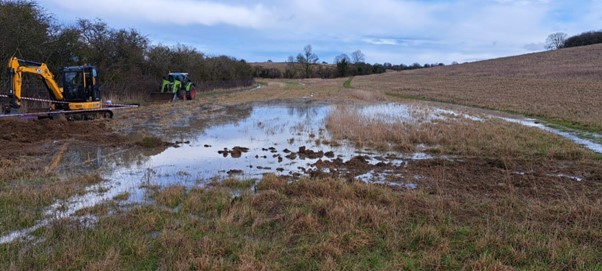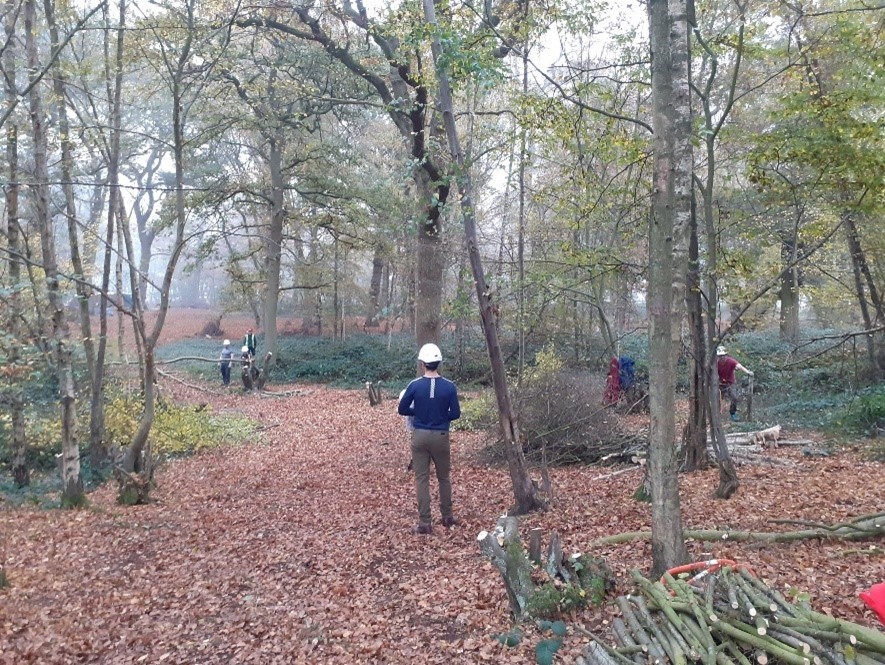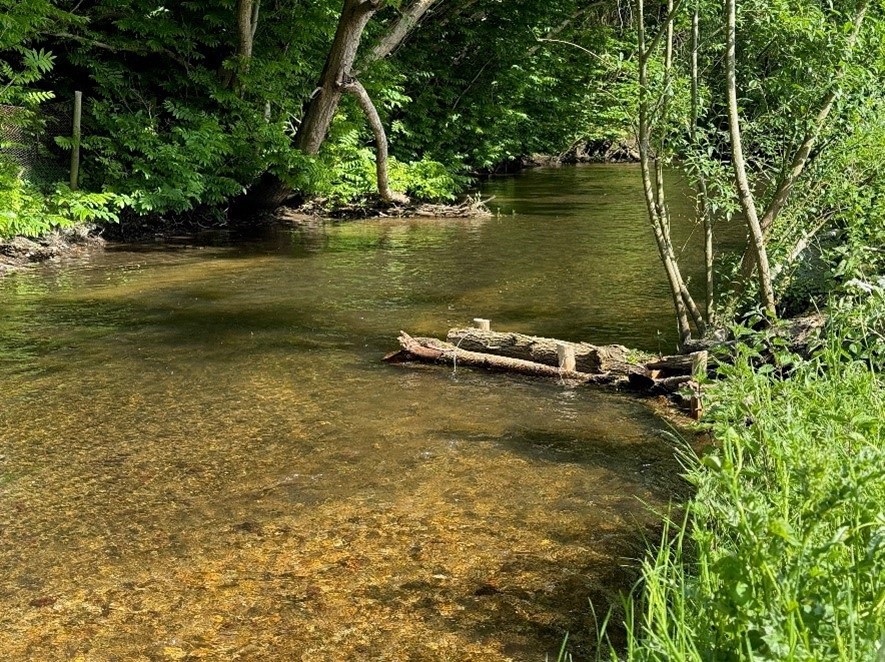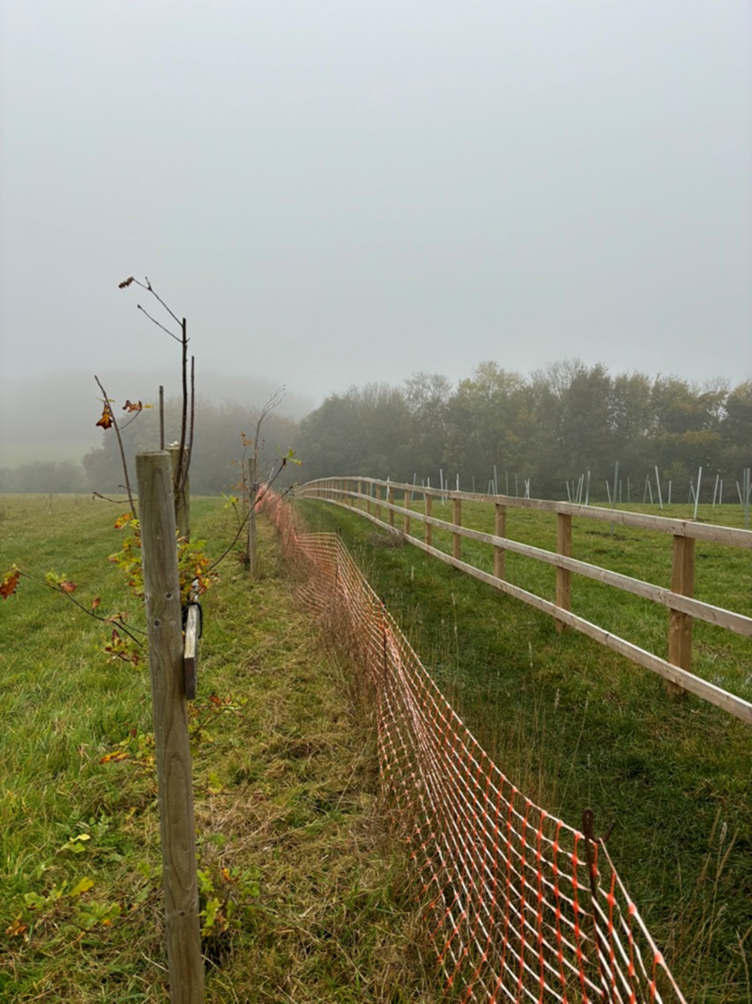Our Rooting for Wildlife scheme is helping communities and nature grow together. From restoring rivers and managing wildflower meadows to creating wildlife ponds and rewilding farmland.
Last year, thanks to your brilliant ideas, we funded 15 projects and the impact has been amazing. These local projects are already making a real difference for wildlife and communities. Now, applications are open for this year’s scheme, and we’d love to hear your ideas!
Here are just a few of the fantastic projects we supported in 2024:
Southbrook allotments: Turning flooded ground into a wildlife orchard
In Sawbridgeworth, an area of disused allotments which were regularly flooded by the nearby river has been transformed into a thriving orchard and wildlife haven. They've planted 146 trees including heritage fruit varieties from the historic Rivers Nursery. The place is now buzzing with life! It supports birds, pollinators, and invertebrates. It even helps connect green spaces nearby like Pishiobury Park.
Sandon Bury Farm: Rewilding for the future
Sandon Bury Farm near Buntingford is one of only two rewilding projects in Hertfordshire. Once an arable farm, much of the land had become less productive.
With support from Rooting for Wildlife, they’ve created a network of new wetlands. This includes ponds and scrapes that now support birds, insects, and even rare plant life.
The new reserve has public footpaths. This means that the local community can explore, enjoy the fresh air, and watch nature transform. It’s a great example of how land can be restored to benefit both biodiversity and the local community.

Buntingford first school: A classroom in nature
At Hertfordshire’s first carbon-neutral school, students have been working hard to turn their pond area into a mini nature reserve. With help from our funding, they’ve planted pollinator-friendly flowers, installed bird feeders and hedgehog houses. They’ve even introduced oxygenating plants and tadpoles to the pond. It’s now a colourful, buzzing space for learning and wildlife alike.
Parndon Wood: Boosting biodiversity in an ancient forest
In Harlow, volunteers have been coppicing trees at Parndon Wood (a Site of Special Scientific Interest). By coppicing certain trees (cutting them back to grow again)and thinning out the woodland it lets in more light, which helps different plants grow and animals thrive.
These trees then grow stronger and healthier, whilst also providing homes for insects, birds, and bats. More light on the woodland floor also means more flowers and cover for wildlife like ground-nesting birds and small mammals.
This work helps the woodland cope with climate change by encouraging a mix of tree ages and species. Volunteers work hard to help manage the area, making sure it stays healthy for wildlife and people to enjoy.

Enhancing the Lea at Waterend: Bringing life back to the river
Volunteers in Wheathampstead are improving a fast-flowing section of the River Lea (a priority chalk river) to make it better for wildlife and reduce flood risk. With funding from the Rooting for Wildlife scheme, they’ve added new features like berms and deflectors. This creates a varied flow and shelter for fish, insects and plants. The work was carried out by volunteers from the Wheathampstead Open Spaces Volunteers group.

Weston irrigation & pond creation: A farm with wildlife at its heart
In Weston, a new pond and hedgerow planting are helping rewild a former vineyard to improve biodiversity. The former irrigation system had failed, and with funding from Rooting for Wildlife, the new wildlife pond will support the water network on site to create a newly restored vineyard, with nature at its heart. With new nesting boxes, 3850 trees planted, and wetland areas created, the land now supports owls, kestrels, and songbirds. It's even helping to reduce flooding by giving rainwater somewhere to go. It’s proof that farming and wildlife can grow side by side, and will provide a greater opportunity for nesting sites.

2nd Bengeo scouts: Rewilding a forgotten corner
At their scout hut in Bengeo, young people are learning about conservation while creating a pollinator-friendly garden. By planting native species and rewilding unused land, they’re connecting their space to other green corridors nearby. They’re also creating a brilliant outdoor classroom for the next generation of environmental leaders!
These are just a few of the exciting projects we’ve supported, and we’d love to help bring your idea to life next.
Got an idea or project to help wildlife? Apply now!
If you have a plan to support biodiversity in your community, no matter how big or small, we want to hear from you. Whether it’s restoring a pond, planting wildflowers, supporting pollinators, or managing woodlands, your project could make a real difference.
Applications close 18th July 2025
Let’s grow something amazing together – for wildlife, for water, and for our communities.